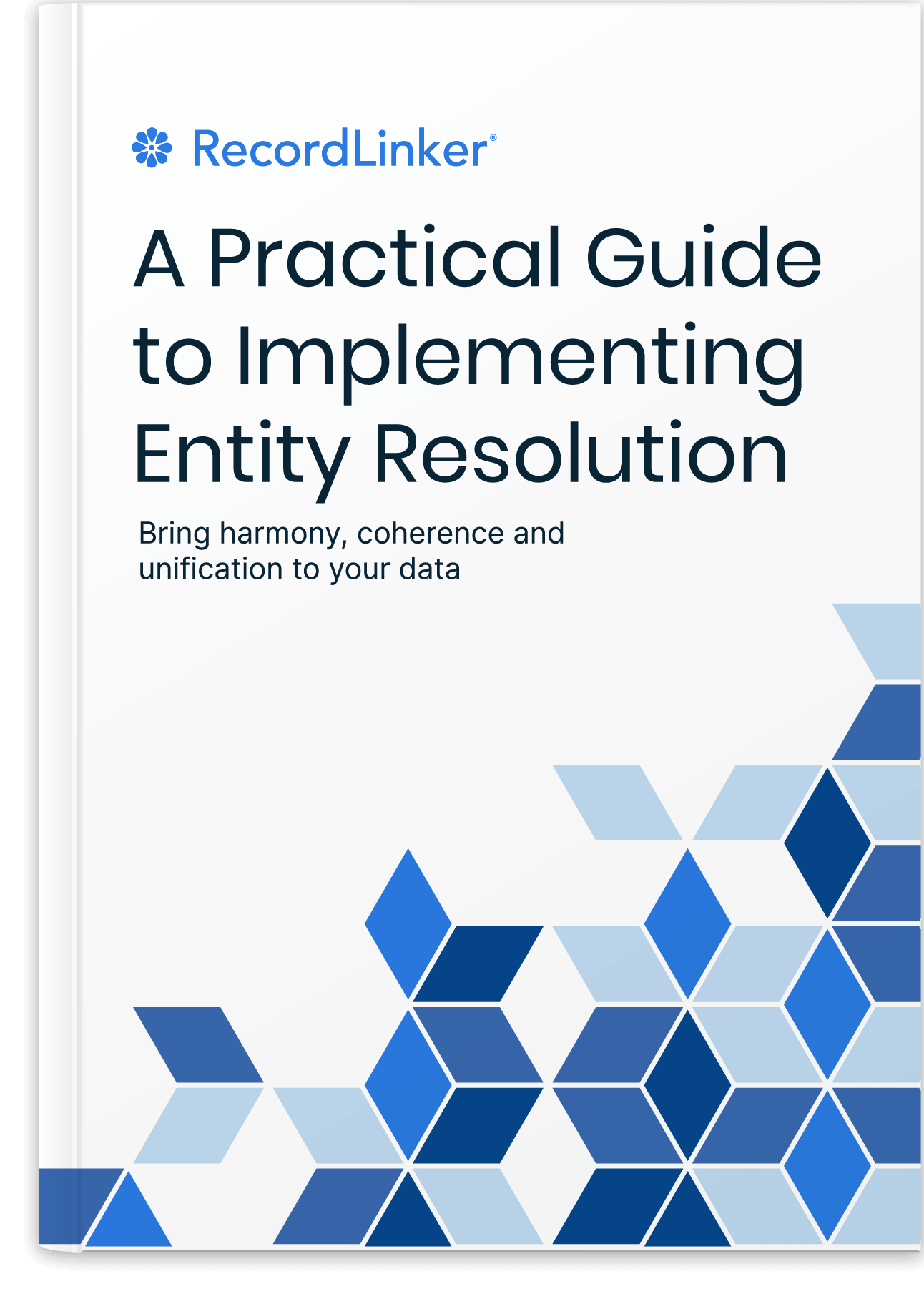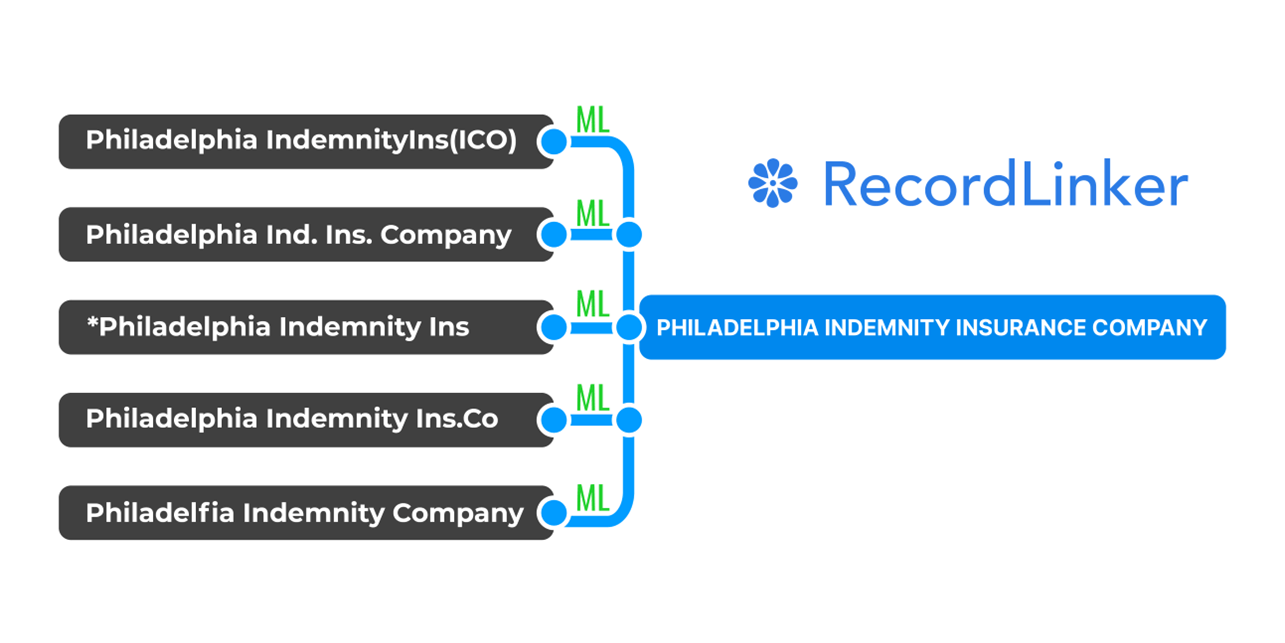What is Entity Resolution

Organizations are increasingly relying on data to make key decisions. But while collecting data has become easier, making sense of it all is fraught with challenges.
In the ‘Big Data and AI Executive Survey 2021’ survey by NewVantage, 92.2% of organizations reported that their biggest impediment to becoming data-driven is not technology, but business processes and culture.
Companies must be able to bring their data together in full view, and use it to gain a holistic perspective on customers, organizations, or products.
But frequently, this is easier said than done. Teams may be logging information on the same topics using different systems, formats, spellings, and levels of detail, complicating any attempt at data linkage. Real world data is unstructured, especially when it comes with manual data entry and siloed departments.
What Are Entities in Data Management?
Entity in data management is an overaching concept, it could be a person, line of business, vendor that various records describe. It’s a real-life concept defined by various attributes, often built by data coming from multiple data points.
You can offset some of clutter in data with master data management by automating data entry and using validation rules. Even if you manage to add structure to your data, there is still a chance that your business will end up caught between disparate data sources, and unlinked data describing specific entities.
That’s exactly where entity resolution comes in.
What Is Entity Resolution?
Entity resolution is the process of identifying and disambiguating real-world entities such as people, places, organizations, and products in unstructured data. Essentially, it’s pointing individual fragmented records to a single entity.
When teams, departments, or branches are keeping track of customers in different ways, using alternative spellings or abbreviations, data matching can help clean up this data and standardize it in order to provide a single, consistent view of each entity.
Manual Data Matching: a Word of Caution
You may think that we are trying to make you buy into the idea that you need some shiny high tech solution, because there are still other ways like… Excel. This may be true for structured and clean data. However, Excel fails miserably at data matching and doesn’t provide scalability – since it heavily relies on very rigid, deterministic rules for its functions and formulas.
People get very creative when it comes to naming seemingly straightforward things like companies, addresses etc.
In some industries, you are tied to so many vendors, third party administrators, and internal teams that it’s not uncommon to find hundreds of unique, case-insensitive spellings. The more systems and people involved, the less manageable it gets. Sometimes companies merge or migrate data between completely different systems. Converting input data from one system and pointing it to your golden records may a daunting task, given various data formatting used to store data.
That’s why Machine-Learning-based record matching tools come in clutch.
Building Your Own Data Matching Solution
For most organizations, approaching entity resolution manually would take a vast amount of time, be extremely tedious, and tie up staff whose talents could be better used elsewhere. That’s why organizations use entity extraction and resolution software to automate the process of matching data.
These programs use a variety of techniques, including natural language processing (NLP) and machine learning, to identify and disambiguate entities.
Check out our article with first-hand insights from developing user-friendly, ML-based entity resolution software. Discover how to plan it internally, what to expect, and what – aside from raw functionality and machine learning – is also important when it comes to quality of life.
Benefits of Entity Resolution Tools
Investing in data matching can bring a wealth of benefits to your company. With the full potential of your data unlocked, you’ll be able to make stronger decisions, reliably set and analyze KPIs, make better use of resources, and improve security.
1. Enabling Holistic Analytics: Patterns and Trends
Entity resolution provides a complete view of organizational data and can help detect patterns and trends that would otherwise be difficult to discern. This is especially useful for uncovering relationships between entities.
For example, imagine you are interested in understanding how customer satisfaction ratings for your company’s products vary by region. Without data matching in place, you would have to manually search through customer feedback to identify which products are being referred to, and then map the feedback to the relevant region.
This process is time-consuming and prone to error. With data matching, you can quickly and accurately identify all mentions of your products in customer feedback, and then map the feedback to the relevant region. This allows you to quickly and easily generate reports.
2. Higher Data Linkage and Overall Operational Efficiency
How much time do your teams spend looking up individuals or organizations in multiple databases? Perhaps you have a Customer Relationship Management (CRM) system, an Enterprise Resource Planning (ERP) system, a human resources (HR) system, among others.
Each of these systems may contain its own set of unique identifiers for individuals and organizations. Anyone looking up information will have to spend valuable time searching through each database separately.
With entity resolution, you can unify these unique identifiers into a single, consistent format. This way, your teams can quickly and easily find the information they need in a single database. As a result, they can spend less time on administrative tasks and more time on productive work.
Free Book: Practical Guide to Implementing Entity Resolution
Interested in implementing an in-house record matching solution with your own development team without using any outside vendors or tools?

The entity resolution process itself will suffer less from bottlenecks. It is not uncommon for large companies to have entire teams of data conversion/migration specialists and analysts whose main job is to maitain and link incoming data. With Machine Learning, you can easily increase output of these teams, limit mistakes, and achieve greater data governance.
This leaves people who know the landscape of your products or industry landscape with more time to take meaningful, creative initiatives that lead to business growth. Too often these specialists get dug up in spreadsheets, outdated core system menus or vendor conversion portals that look like software from early 2000s, and hopeless, hopeless manual grind. Naturally, it translates to better talent retention.
3. Better Fraud Detection and Smoother Investigations
Organizations dealing with large data sets may miss signs of fraud due to the difficulty of identifying patterns across different data sets.
However, data matching can help to connect the dots by automatically identifying and flagging entities such as names, organizations, and addresses that appear across multiple data sets. This can help to uncover fraudulent behavior that would otherwise be difficult to detect.
For example, if a customer has multiple accounts with different addresses, birthdates, or phone numbers, that could be a sign of suspicious activity. By linking together all the data on that customer, entity resolution can help organizations flag potential fraudsters, limit the occurence of the most brute fraud attempts, and reduce the time through which certain behaviors go unnoticed.
4. Compliance With Data Regulations
Data regulations like GDPR and CCPA have become increasingly common and complex in recent years. They often require organizations to track and manage large amounts of data about individuals. This may include the right to be forgotten and data deletion requests – it’s easier to control what data you have and manage its deletion when your records are grouped.
Record matching can help organizations comply with these regulations by providing a way to identify and connect data about individuals across different systems.
For instance, imagine an organization that collects customer data from multiple sources, including an online form, a CRM system, and an e-commerce platform.
Without data matching, this organization would have to manage each customer record separately. Simply staying on top of regulatory requirements would cost an enormous amount of time, and there would be a significant risk of error.
Named entity resolution allows organizations to link customer records from different sources together. This gives them a single view of each customer, making it easier to manage related data and comply with regulations.
5. Improved Customer Service
Providing your customer service agents with complete information about a customer – including their name, contact information, and account history – will allow them to provide a more personalized, efficient service.
When handling complaints and feedback, agents will be able to quickly and easily gain an understanding who the customer is and their specific situation. It limits the frustration customers develop while being repeatedly asked by different agents to provide information that they have already left.
This goes without saying – enhanced service can lead to improved customer satisfaction and loyalty.
6. Sharper Marketing Efforts
Data matching can help marketers create more targeted, strategic campaigns. Armed with more complete information on exactly who their audience is, they can segment their lists more accurately and send highly personalized communications.
Additionally, your marketing team can use entity resolution to gain insight into the competition. By understanding who your competitor’s customers are, you can more effectively target your own marketing efforts. This includes:
Identifying Competitor Mentions – marketing teams can use entity resolution to sift through large volumes of data, such as social media mentions, customer reviews, news articles, and industry reports, to identify references to competitors. By accurately linking and resolving named entities, marketers can quickly gather information about competitor activities, product launches, market positioning, and customer sentiment.
Analyzing Customer Overlap – by linking customer data from different sources and resolving named entities, marketers can establish the overlap between their customer base and that of competitors. This analysis can help identify shared target demographics, purchasing behaviors, and preferences, enabling more targeted marketing campaigns and competitive positioning strategies.
Monitoring Market Trends – data matching can be used to consolidate data from tracking mentions of competitors, products, product categories across various channels over time. By linking these data points, marketing gets a chance to analyze patterns in competitor activity and sentiment, gain a deeper understanding of market dynamics, emerging trends, and shifts in consumer preferences. This information can inform strategic decision-making, including product development, pricing strategies, and marketing messaging.
Identifying Partnership Opportunities – entity resolution can uncover potential partnership opportunities by identifying businesses or organizations that frequently co-occur with competitors in the same contexts. By analyzing these relationships, marketers can identify potential collaborators, suppliers, or distribution channels to strengthen their market position and expand their reach.
Suggested Reading About Entity Resolution
Data management and entity resolution are by no means easy topics. These processes are open to improvement, strategic changes, and require careful planning to help you enable your business in a useful way. Here are some articles from our blog worth looking into:
- Master Data Management: Key Compontents and Functionalities
- How To: Creating and Managing a Canonical Record Set
- 10 Customer MDM Best Practices
- Customer Master Data Management: Optimization Tips
- Normalizing Names of Companies, Vendors, Suppliers
Record Linkage Wrapped Up

If messy data is slowing down your organization and complicating decision-making, the best time to take action is now.
Not only can record linkage help you make sense of all that disparate data, but it can also give you a competitive edge, improve customer relationships, and help you avoid trouble down the road.
RecordLinker uses Machine Learning to normalize records across your data systems!

Interested in improving the quality of your data, but don’t have the time or resources to create a master data management program from the ground-up? RecordLinker is here to help. Our data integration and management platform can quickly connect your disparate data sources, identify and deduplicate records, and keep your data clean and up-to-date.
To learn more about how RecordLinker can help you improve the quality of your data, request a free demo!



